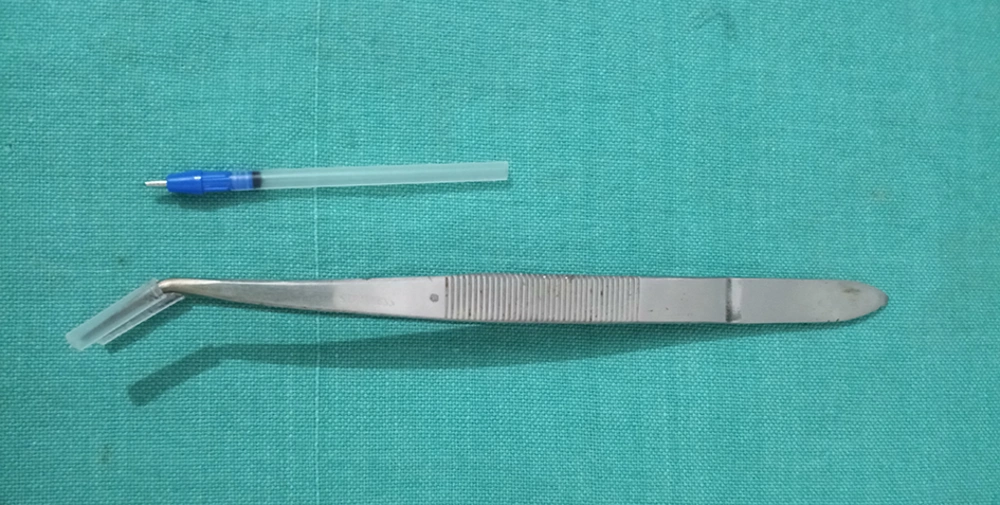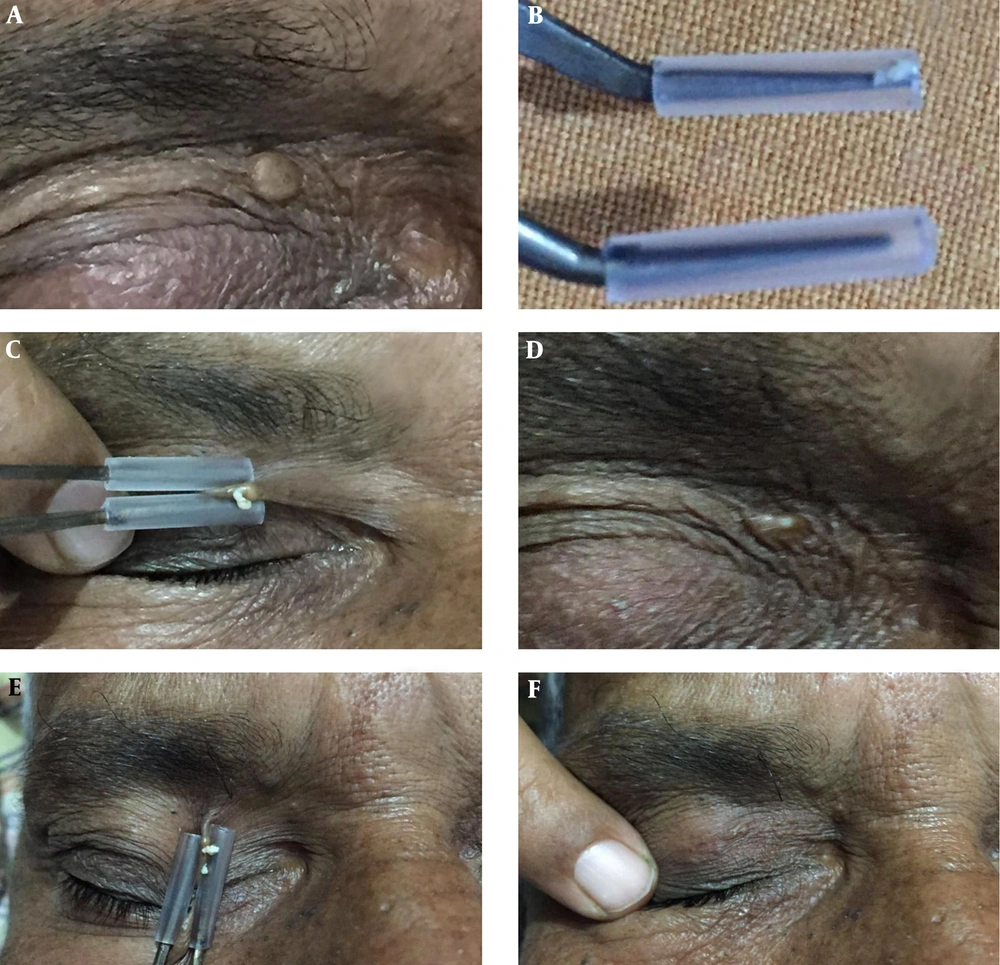Dear editor,
Senile comedones are common on the actinically exposed facial skin of middle and old aged people. In 5.6% of the aged people, senile comedones are found in the periorbital region. (1). These senile comedones are composed of keratinous material, which is histologically surrounded by photodamaged elastotic tissues. It can be treated with topical retinaldehyde (2); however, these comedones are resistant to topical. Hence Dermatologists treat them with comedone extractors, light cautery, safety pins, pen punching, CO2 laser (3), versatile paper clips, disposable syringes (4), and tissue dissecting forceps (5), but these are not safe for loose tissue of eyelids and periorbital area. Direct squeezing out of the comedone can be done with fingers and forceps. However, the finger is not a good and aseptic method, and metallic forceps are not secured from getting tissue injury in the form of abrasion, subcutaneous bleeding, and senile purpura over the site.
Therefore, here I advised the use of a less injurious dissecting forceps to extract out senile comedones over the periorbital region and eyelids. Dissecting forceps are the readily available instrument in the clinic, which can be applied over the periorbital region. However, it is metallic, hard, and traumatic, which is made less traumatic by doing some modification in the tips of the forceps. To do this, first, two small pieces of tube of about 1-inch long are cut from aseptic refill polytube of ball pen, and then the tips of the forceps are embedded into the tube (Figure 1).
Following this, the periorbital comedone on the eyelid is made aseptic with lotion povidone-iodine and medical spirit (Figure 2A). The insulated tips of the forceps are also made aseptic before extracting the comedones (Figure 2B). The senile comedones are usually opened comedone. In the case of closed comedones, a minor prick incision was put with a disposable needle before the procedure. Then, the comedone is compressed out gently and safely with the forceps applied twice at 90° to one of the other (Figure 2C-F). We observed the complete extraction of the keratinous material. This procedure could be repeated many times over comedones of the periorbital region. Post comedone extraction, no significant tissue injury and subcutaneous bleeding are observed over the sites. Thus, the dissecting forceps, with refill polytube insulated tips, makes the comedone extraction less injurious to the loose tissue of the eyelids.
A) The senile comedone before its extraction. B) The forceps tips with aseptic refill polytube. C) The senile comedone is squeezed in the first attempt. D) The senile comedone with its remnant content after the first attempt. E) The senile comedones are squeezed at 90 degrees in the second attempt. F) The senile comedone is extracted out completely in the second attempt.
In conclusion, senile comedones nonresponsive to medical treatment over eyelids and periorbital region can be extracted out atraumatically with polytube embedded tips of the tissue forceps, which could be a better option for the comedone extraction on loose tissue of other parts of the body.


